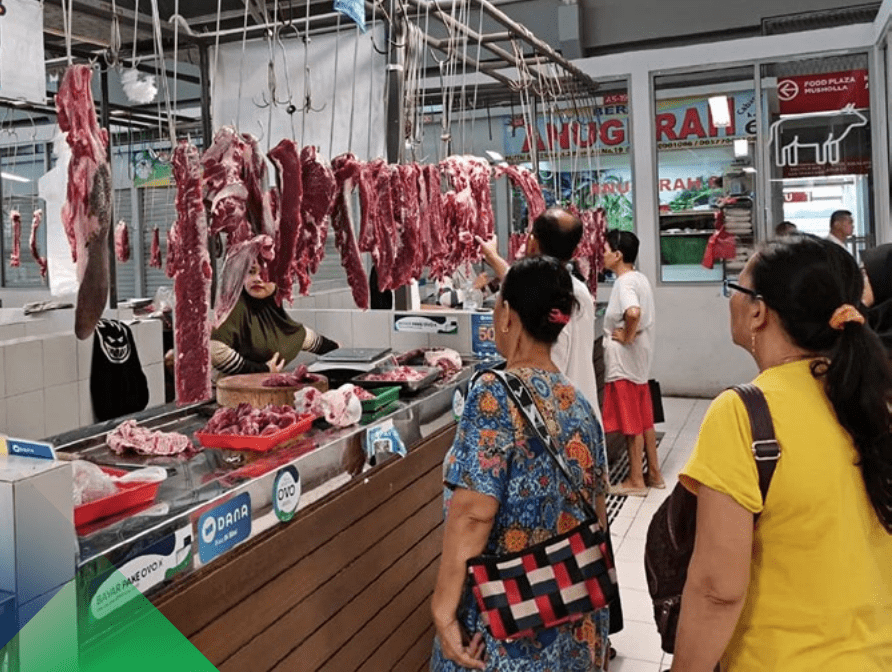It is now estimated that around 75 percent of Indian Buffalo Meat in Indonesia is sold through wet markets, competing directly with fresh beef from locally processed Australian and local cattle.
This article, originally published in LiveCorp’s 2020 cattle research, development and extension update last week, outlines new research now underway to examine what drives Indonesian consumer decisions when they are buying fresh beef in the wet market.
The Indonesian government started importing frozen Indian buffalo meat (IBM) in 2016 as a way of providing people with access to affordable nutrition – part of its ongoing push toward greater food security.
Indonesia is Australia’s largest live cattle export market and around 90pc of beef from those animals goes into wet markets.
The massive distribution of IBM through wet markets is assumed to exist because of demand from meat sellers, with surveys in wet markets in 2017-18 indicating some of those sellers mix or substitute fresh beef with IBM, as well as other products, as they can obtain greater margins compared to genuine fresh beef.
This poses a threat to demand for fresh beef from Australian cattle, and also to the competitiveness of the Australian industry.
To measure the current impact of IBM on the fresh beef trade in Indonesia, the Livestock Export Program (LEP) is undertaking a research project to build on the surveys it carried out in the early days of IBM importation.
Collecting objective and up-todate information will support the Australian livestock export industry to make informed decisions and respond to increased competition.
Research will be conducted in very traditional central markets, as well as the more modern markets in the Greater Jakarta area, and also in Medan, Sumatra – a traditional stronghold for IBM.
The project will examine what drives consumer decisions when they are buying fresh beef in the wet market. This includes nonhousehold consumers who buy beef on a daily basis for their small restaurant or home-based catering businesses, and are estimated to make up around 70pc of people who buy fresh beef in wet markets.
The LEP wants to identify whether there are attributes or factors that influence their purchase decisions beyond price.
It is also an opportunity to gauge their awareness that some sellers may be thawing frozen meat, including IBM, and substituting it for fresh beef, and how much this matters to them.
Researchers will also be collecting new data on volumes of IBM sold to small restaurants and food service through wet markets, factors affecting the purchasing decisions of distributors and stall holders, and attitudes towards beef and IBM more generally.
Project outcomes and recommendations will enable the LEP to make informed decisions about the value proposition of any future activities and investments in marketing, research or other interventions in the fresh beef market.
For instance, the likelihood of success for any promotion of ‘Australian’ beef, given the risks associated with meat substitution and other distortive practices.
Results from the research will be available in 2021.
To read this original article and others in LiveCorp’s 16-page livestock export industry research update click here

